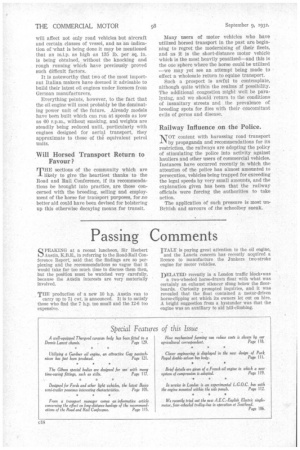Oil Engines on the Continent
Page 39

Page 40

If you've noticed an error in this article please click here to report it so we can fix it.
rIONFIDENTIAL information has been given -/to us concerning the development of the compression-ignition engine on the Continent. Political disturbances in Germany have given the impression that the progress of this type of power unit may have been arrested, but such is not the case. The experimental laboratories have been carrying out their Work with their usual Teutonic thoroughness and close attention to detail, and we shall shortly be in the position to give some news which will be of vital interest to our ownmanufacturers, but, in the meantime, we would impress upon engine designers here the great importance of making certain that they are not infringing existing patents. We refer elsewhere to the fact that the German Patent Office has called for the production of an exhaustive treatise dealing with all the important inventions relating to the compression-ignition engine, not only in Germany, bht abroad. This has been mentioned.to us as being, likely to prove something of a bombshell,, but whether or not this be the case, it will certainly he a valuable addition to the available information on the subject, The innovations in, the way of . engine design will affect not only road vehicles but aircraft and certain classes of vessel, and as an indication of what is being done it may be mentioned that an m.i.p. as high as 135 lb. per sq. in. is being obtained, without the knocking and rough running which have previously proved such difficult factors.
It is noteworthy that two of the most important Italian makers have deemed it advisable to build their latest oil engines under licences from ilerman manufacturers.
Everything points, however, to the fact that the oil engine will most probably be the dominating power unit of the future. Already models have been built which can run at speeds as low as 60 r.p.m., without smoking, and weights are steadily being reduced until, particularly with engines designed for aerial transport, they approximate to those of the equivalent petrol units.












































































































